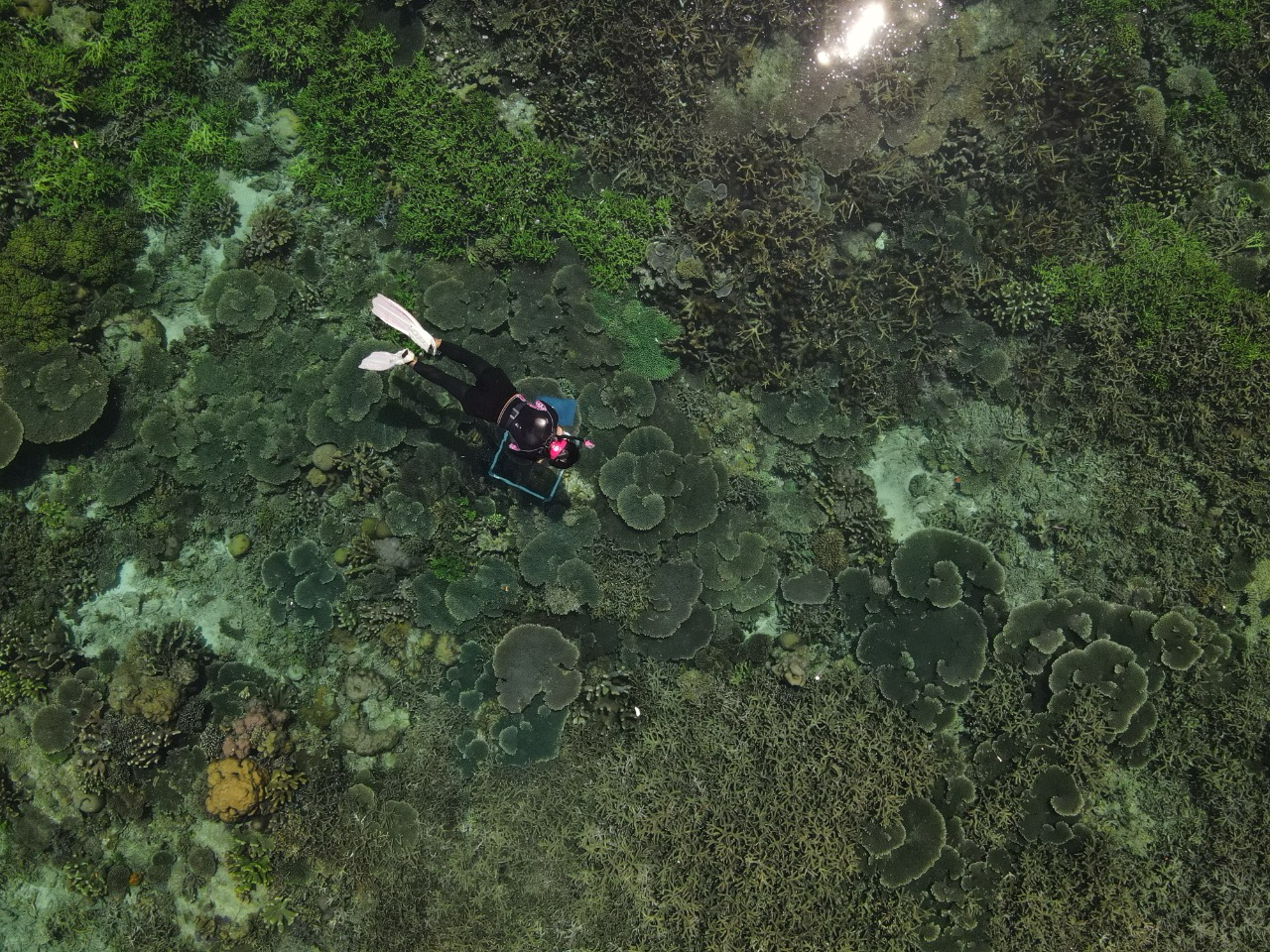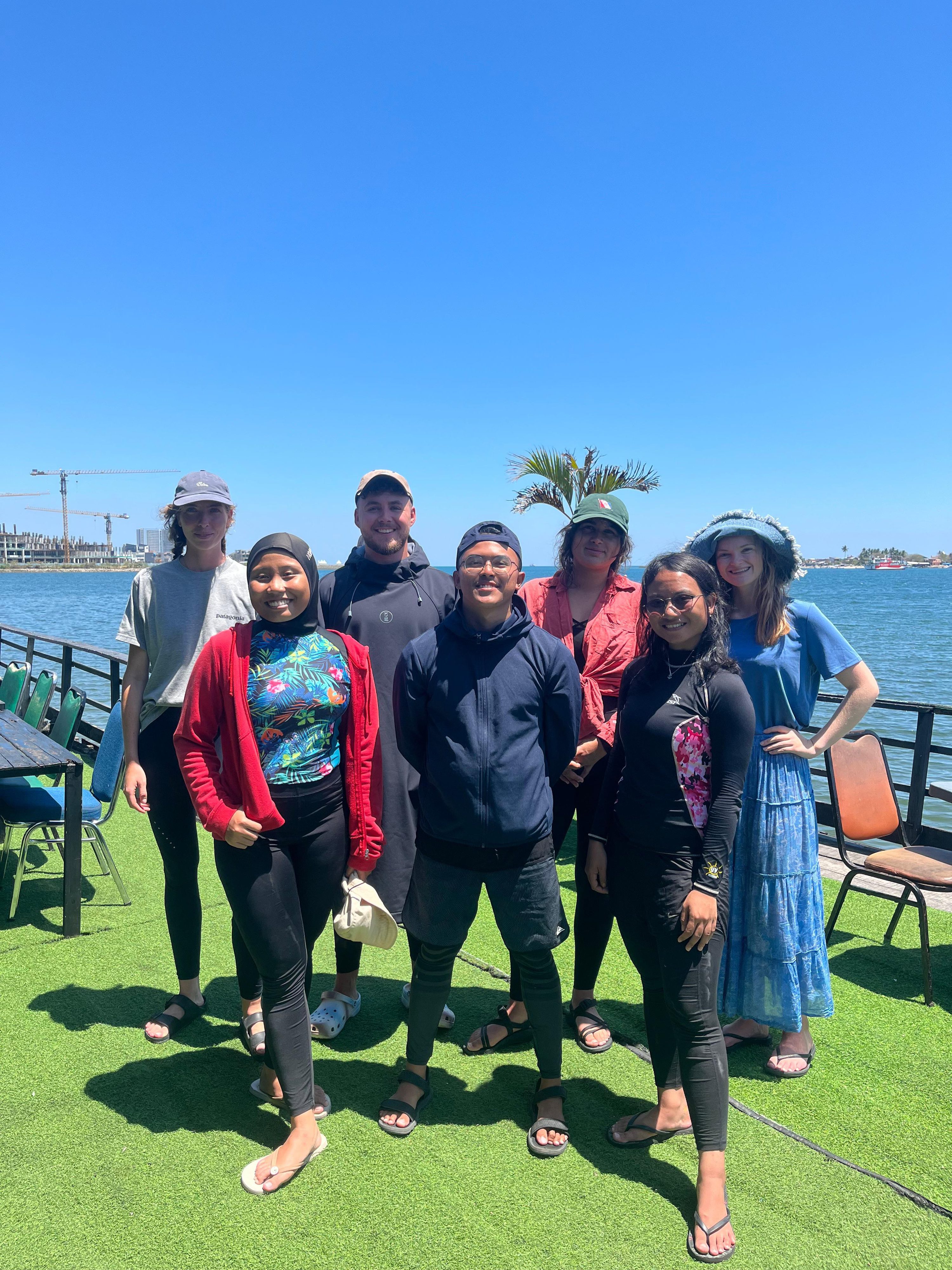
The Beauty of Restored Reefs
Sheba Hope Grows Advocate, Gita Alisa, explores the ability of restoration project to restore aesthetic value in a newly published paper titled "Benthic communities on restored coral reefs confer equivalent aesthetic value to healthy reefs"
In a new paper published in Scientific Reports, first author Gita and colleagues found that large-scale coral restoration can restore a reef’s visual appeal to the same level as healthy, pristine natural reefs. The study was conducted at one of the world’s largest reef restoration sites in Indonesia, where degraded rubble fields were restored using the MARRS (Mars Assisted Reef Restoration System) method at Bontosua Island, Central Indonesia. Over a few years, these sites saw coral cover increase and colourful reef life began to return.

To understand whether restoration also revives the reef’s beauty, the team analysed 883 photographs of coral reefs in Indonesia—across healthy, degraded, and restored sites—leveraging artificial intelligence models trained on the aesthetic preferences of over 3,000 people from 107 countries. Consistently, images from restored reefs were ranked just as beautiful as those from healthy reefs, and far more aesthetically pleasing than those from degraded sites.
The study also found that colour diversity, coral cover, and structural complexity are key drivers of reef aesthetics. Restoration that supports a range of coral colours and forms not only helps marine life return but also restores the reef’s visual and cultural value, crucial for communities that rely on marine tourism and for inspiring people to care for the ocean.
Beyond aesthetics, this research underscores the broader conservation impacts of coral restoration. Healthy, visually appealing reefs are more likely to engage local communities, build stewardship, and drive sustainable tourism, providing economic incentives that help safeguard reefs in the long term. By demonstrating that restoration can bring back the beauty people value, this work provides a compelling argument for investing in coral restoration as a nature-based solution to climate resilience, biodiversity protection, and community development.
This research was made possible through Gita’s role as a Sheba Hope Grows Ambassador. Supported by Sheba Hope Grows, Gita received grants to advance this work at Lancaster University, UK, and to present the findings at Reef Conservation UK and the British Ecological Society Coral Reef Symposium. These opportunities helped engage the restoration and conservation community with one of the often-undervalued metrics of restoration success—aesthetic value, which is at the heart of coral reefs’ role in supporting sustainable marine tourism.

Alongside six other Sheba Hope Grows Ambassadors, Gita also participated directly in restoration efforts, deploying Reef Stars, planting coral fragments, and witnessing barren rubble fields transform into thriving coral gardens alive with fish and colour.
This study highlights that restoration is not just about ecological metrics, but also about hope, action, and restoring the connection between people and the ocean. Seeing restoration work in the field and confirming its impact through research fuels the commitment to continue advancing coral reef conservation globally.

Read the full paper open access in Scientific Reports [Benthic communities on restored coral reefs confer equivalent aesthetic value to healthy reefs | Scientific Reports]

